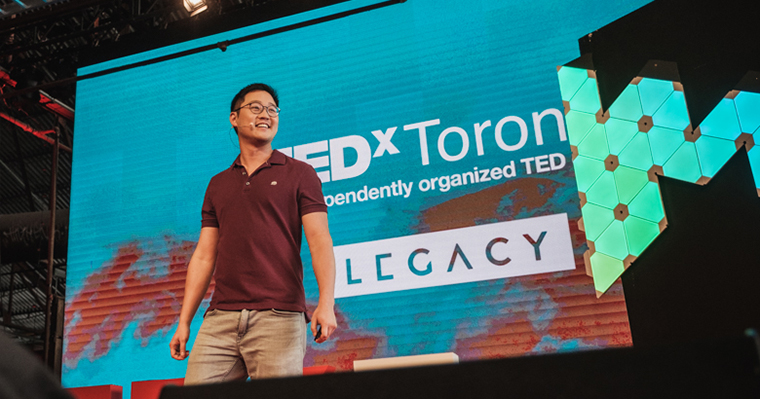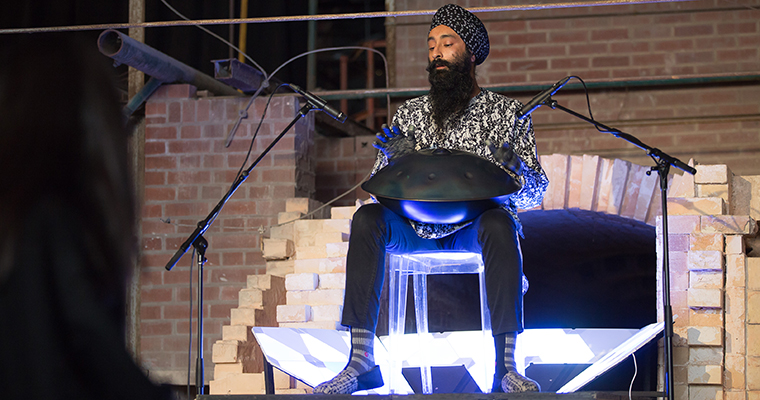
November 2nd, 2017
In four short years, Nanoleaf has grown from a crowdfunded startup to a major player in the global lighting industry. According to Gimmy Chu (ElecE 0T6), Nanoleaf’s co-founder and CEO, its success has as much to do with the way the company thinks about innovation as the groundbreaking technology it packs into its products.
Chu was one of 14 speakers at TEDxToronto, held last week at Evergreen Brick Works. Under this year’s theme of “Legacy,” he shared the stage with well-known public figures such as Jennifer Keesmaat, former chief planner for the City of Toronto and current U of T professor; Cheri DiNovo, MPP Parkdale – High Park; Penny Oleksiak, Olympic gold medalist; and Catherine Reitman, creator and star of CBC’s Workin’ Moms.
Chu’s legacy will be ambitious: He wants to challenge and expand on the traditional notion of light.
From pursuing curiosity to exploring the abyss, here are five memorable moments from Chu’s talk:
On innovation
At some point, we stop questioning the world around us. We stop being curious. And it’s a serious issue because it’s this desire to question and explore the unknown that really drives innovation. In our world of knowledge, there are the things we know, there are the things we know that we don’t know, then there’s the abyss. The abyss contains everything that we’re completely unaware of; the things that we don’t know we don’t know. It’s in the abyss that we can find new ideas. It’s in the abyss where innovation can be discovered.
On leadership
As the CEO of a startup, I see my role as an explorer, and my company, Nanoleaf, is like a kid trying to explore the world to figure out its place and its purpose.
On founding a startup
Back in 2013, I started Nanoleaf with two of my best friends. We wanted to make products that had an impact on the world, particularly around sustainability and lighting. I remember walking through this lighting trade show in China and seeing a sea of lightbulb companies. Their products all looked the same: your typical, boring, not-very-energy-efficient lightbulbs. We knew that the underlying LED technology had the potential to be at least twice as energy efficient so we wondered, why aren’t they doing it? Why couldn’t it be better? And could we be the ones to improve it? We set out on a mission to build a better lightbulb.

On creating the world’s most energy-efficient lightbulb
We started with some simple questions: Does a lightbulb have to be round? Does it have to be encased in glass? How do we make an LED bulb more energy efficient? Looking back, I think it benefited us that we never created a lightbulb before. Because without any prior knowledge limiting our imaginations we were able to explore the abyss and create something the world hadn’t seen before.
On looking beyond the bulb
Why were people stuffing complex LED technology into a lightbulb to create light? It’s because they stayed within the things that they know — they didn’t bother to explore their abyss. We took advantage of having fresh eyes to look at this problem and we dove into the abyss. We asked ourselves: ‘What is the best source of light that we have today. On most days, it’s the sky; nothing gets better than natural lighting from the sky. So why not model lighting after the sky? We ended up with Nanoleaf light panels. For us, this was our way of shattering traditional concepts of lighting and thinking beyond the lightbulb.
This story originally appeared on U of T Engineering News.
More information:
Jessica MacInnis
Senior Communications Officer
The Edward S. Rogers Sr. Department of Electrical & Computer Engineering
416-978-7997; jessica.macinnis@utoronto.ca